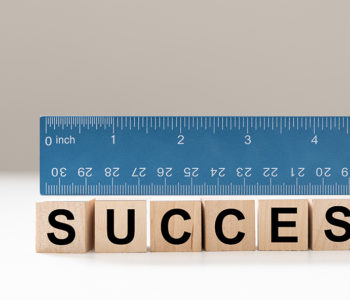 Productivity
Productivity Applied GTD: Observations through Experience
Productivity seems to be top of mind for me almost constantly these days, whether it is focused on myself, my team, or even my family. It has an impact on all of our activities, whether we are doing the chores around the house, working on projects for the office, or even getting a gathering organized. I know that for those that are reading this, those statements are fairly obvious since mostly like-minded people are the most likely to be reading this, however, on the off chance someone new is exploring and stumbles across this, well… Welcome and hope you find some of this helpful.
The details I am sharing are based completely on my personal observations while striving to integrate the GTD practice throughout my life and career. I am a take-it-or-leave-it kind of person when it comes to what should be done versus what is practical and most efficient. Keep that in mind as we get into some of the more interesting observations that I have made over the last decade-plus while using the Getting Things Done (GTD) Methodologies as the anchors for my personal productivity practices.
Observations:
I have organized my observations into a series of topics that I feel are most representative of the stumbling blocks that I have experienced on my journey so far. Each one is critical to how I interact with my personal productivity system today and how it evolves alongside the changes in technology.
1. Frictionless does not always mean simple
Frictionless is the key word here, it should be a process or activity that requires very minimal effort on your part. This does not mean that the process or activity must be simple, more that your interaction with it is extremely efficient. Automation is a very large part of enabling your work efforts to fall into this area. How much effort and time is spent doing a task or worse keeping up with the tasks yet to be completed should be viewed as a finite resource and managed accordingly. Where possible use the tools at hand to minimize or eliminate repetitive tasks.
This evaluation of a process or activity is typically lacking for the majority of people and organizations. Probably the most unrealized expression of efficiency that you could find, where people have to spend more time thinking about how to tell you what the process is than actually doing it. Just getting close to achieving this effect will do wonders for all of the activities in your productivity life.
2. Autonomic is the goal and the success criteria
As a companion to ensuring your process is frictionless, you should also be working towards making it autonomic, this takes time, lots of it, and repetition as well. You are changing how you perceive productivity tasks from being a system you need to do something to have the desired result into a set of actions that you don’t even have to think about to have it fit into your productivity system. When you have reached this state, your process has reached its full potential to enable maximum efficiency in your productivity practice.
When you boil it all down you are working to adjust your keystone behaviors to be more aligned with what you feel should be a better process and operational state than where you are currently at. Taking some time to learn more about how to establish habits in your life is something I recommend to everyone.
3. It is not about doing all of the tasks on your list
Keeping track of all of the things that you need to do, does not mean that you need to do them. I know that sounds a little bizarre, but you have to keep in mind, no one can do everything that needs to be done, sometimes you have to choose what is most needful at the moment and what steps can be taken towards your goals. Not everything that appears on your lists will help you accomplish that and there may be quite a bit that is most distracting you from it. Not tracking it, however, is going to kill your productivity because it will just be out there lingering in the back of your mind instead of being captured and externalized for you to interact with it when you need to.
Prioritize and be realistic about what you can do versus what you need to do. Having too much on the list that you are not sure of where it belongs is almost as bad as not tracking it and will add stress to your interactions with it, making it more of a pain point than a useful tool in your productivity tool belt.
4. Context is King
Context is everything, without it tasks, priorities, and all of the effort you put into being productive just fall by the wayside. If you are not in the right place, with the right tools to accomplish a task, how will you be able to complete that effort? Short answer, you won’t. Knowing all of the things that need to happen in a place, time, or situation is challenging. I can’t tell you how many times I am driving home from the store and I remember the one thing that I forgot to pick up while there or when I am working on a project and I cover most of the requests only to find there were one or two that were not completed because I was not processing everything related to the current context of the work in front of me.
This is common, after all, we know that memories are fallible as a storage and retrieval system, so make sure that the context that you are tying your process to, and how to know what to do where, when, how and with what resources will be a defining factor in the success of your productivity system.
5. One way is not the only way
No one process, system, routine, or pattern is applicable to all situations. Each person thinks differently from every other person, and the thoughts that you had today will not be the same thinking that you will have tomorrow, a week from now, or especially in the coming months and years. The goal is to always be evaluating how your process and system are functioning for you. Where there are pain points or friction in your process, these are opportunities to improve and adapt to get to a better version of what works for you, tailored to your needs.
Also, be daring, take a chance, and try something completely different that what you are used to doing. This shakes up your ability to fall back into comfortable and familiar patterns and will open the door to let you have more creativity in solving your productivity challenges.
6. You are never done
Change is constant and one of the only rules that you can depend on in the universe. Knowing that your system will continually evolve, it can improve, degrade, be engaged with, or be abandoned, It all comes down to what effort and intent that you pour into it. It never stops and will be something that you carry with you all of your life. For those that have engrained the process and methodologies into their very core, this will be as natural as breathing. For others, this will be a challenge throughout their lives on how they step in and out of the different evolutions on their productivity journey.
7. Reflection is too easy to overlook
We get caught up in the trappings of living our lives and many fail to take a step back and reflect on what has happened and address the lessons learned along the way. Everyone does this from time to time, however, it is essential for our ability to move forward that we take time to do this on a regular basis. What went well, what didn’t, what opportunities are out there for us to take advantage of, and who should we take the time to express our gratitude and appreciation for? All of these questions and many more, I would suspect should be asked of ourselves more often than we do.
This is not a new concept and challenge for those well along on their productivity journey, but for those starting out, I can not express the importance of this enough. After all, those who ignore history are doomed to repeat it. Repeating the same actions over and over again and expecting a different outcome is akin to insanity.
8. Tools should help you, choose wisely
In today’s digital world, there are so many different tools and applications that we can use to help us organize our lives. Keeping the observations above in mind, make sure that you select tools that will improve your system not add to your workload by trying to track all of the stuff that is coming into your world.
That goes for not just the organizational tools but also for all of the new access points to content that constantly is emerging. After all, if you are feeling overwhelmed with all of the stuff flowing into your system today, why would an increase in that make it any easier to manage?
Taking the time to also optimize your system with tools that you can automate and synchronize with your workflow are also worth taking the time to set up since it will help make your life that much more efficient.
Where to go from here?
Whether it is improving, adapting, or modifying your personal productivity system, you should make sure to really evaluate how it is working in your life. Choose how to make each step and process work better for you so that you can focus on more important things.
Interested in checking out more about our Productivity Practices, read some more of our Productivity Article Series.







